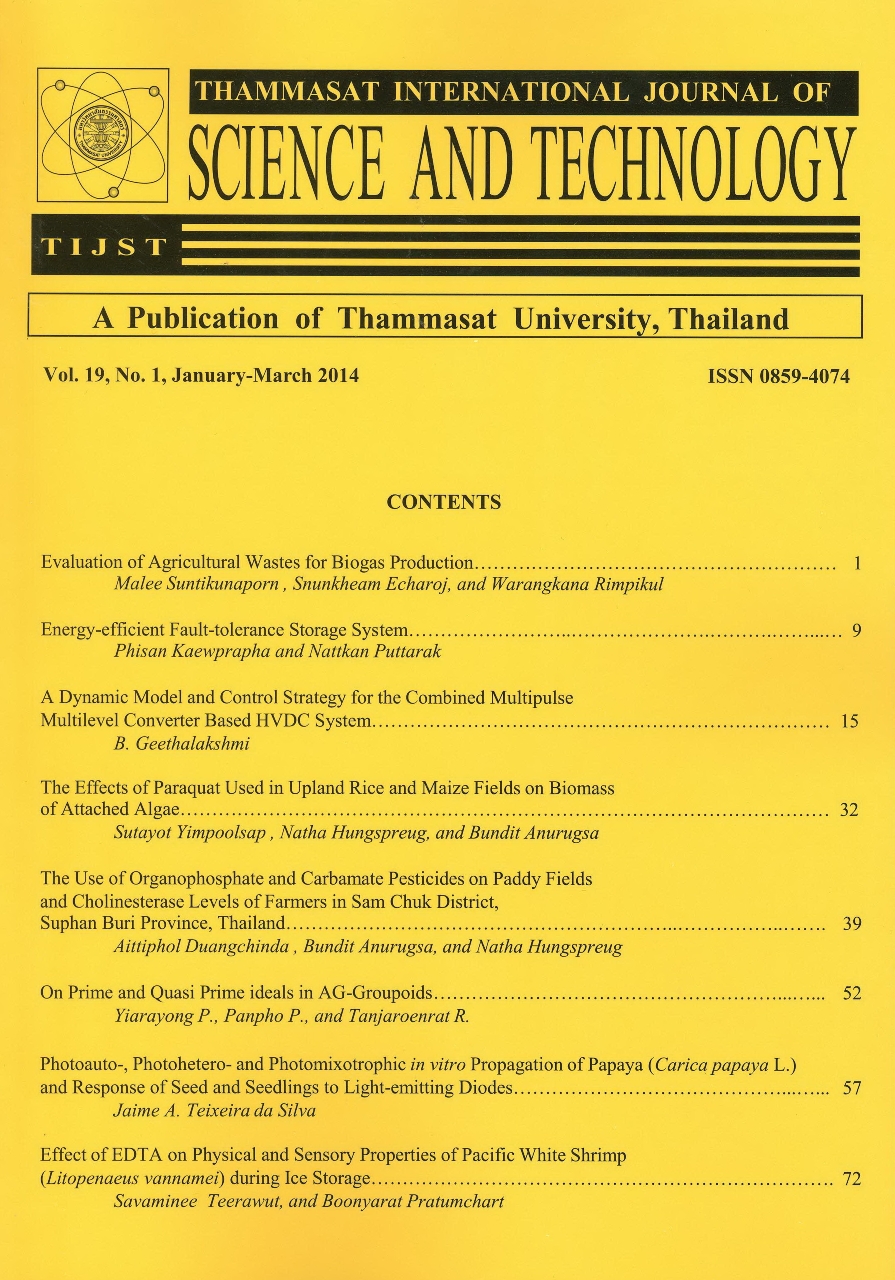Tuberose (Polianthes tuberose L.) Shoots Multiplying and Callus Induction by Benzyladenine, Naphthaline Acetic Acid and Oryzaline
Main Article Content
บทคัดย่อ
Explants from axillary buds of Polianthes tuberose L. were used in this experiment. They were cultured on Murashige and Skoog (MS) medium supplemented with various combination of Benzyladenine (BA) (0, 0.1, 0.5, 1.0 and 2.0 mg/l) and Napthaline acetic acid (NAA) (0, 0.1, 0.5, 1.0 and 2.0 mg/l). Explants developed into callus after culturing for 4 weeks and increasing on MS medium supplemented with all concentration of BA. Callus transferred to MS medium supplemented with various combination of BA (0, 0.1, 0.5, 1.0 and 2.0mg/l) and NAA (0, 0.1, 0.5, 1.0 and 2.0 mg/l), and subcultured every 4 weeks into the same medium. It was found that MS medium supplemented with 0.5 mg/l BA and 2.0 mg/l NAA was sufficient for shoots induction and multiplication roots regeneration from callus within 12 weeks. Callus turned brown and had low survival rate (%) when soaked them with high concentration of oryzalin. (more than 1.0 and 2.0 mg/l).
Keywords: axillary bud; BA; NAA; oryzalin; Polianthes tuberose.


